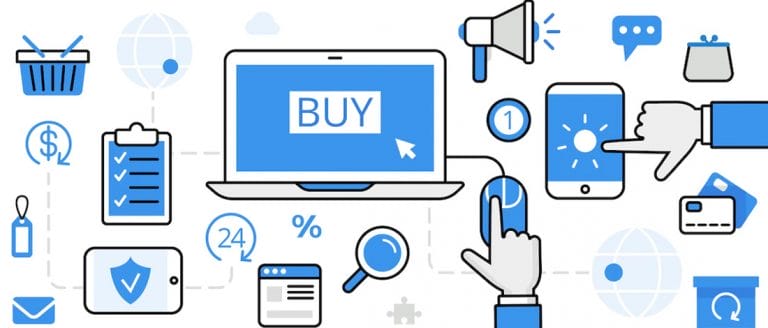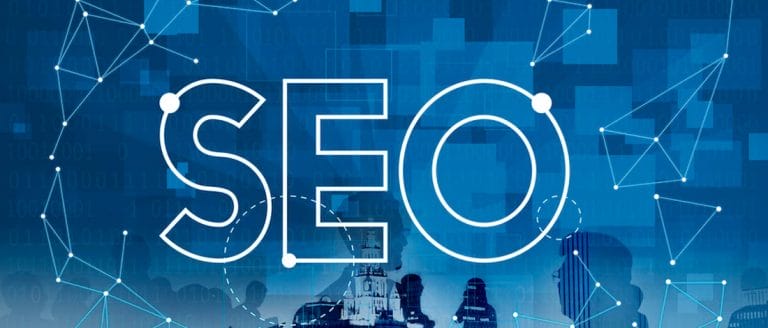Digital marketing is a term that refers to a variety of marketing strategies that are done through the use of technology and it allows businesses to reach a wide audience quickly and inexpensively. There are several types of digital marketing and each has its own benefits and drawbacks. So it's important to know when and how to use them.
Some types of digital marketing include online advertising, email marketing, social media marketing, and website design and development. It's important to choose the right type of digital marketing for your business and target the right audience.
Whether you’re just getting started or you’ve been working in digital marketing for years, it’s important to understand the different types of digital marketing that are out there. Let’s take a look at the different types of digital marketing:
Types of Digital Marketing
1 - Content Marketing

Content marketing is a great way to build trust with your audience and establish yourself as a thought leader in your industry. By creating informative blog posts, articles, and white papers, you can provide valuable information to your readers while also promoting your products and services. Content Marketing is structured by a step-by-step process.
Initially, the content tends to be more general, such as complete reports. As the process continues to the end, more specific content is supplied, such as testimonials and case studies.
In addition to these features, there may be other factors that influence the features channel, format, and type you choose when creating content for your clients.
- It's free of cost.
- Content is very versatile. You can use videos, images, audio, text, and games to educate, amuse and inspire your audience.
- It powers other types of digital marketing.
- The competition is really high and many effective marketers have to work many hours each day to attain top rankings.
- You should strive constantly to produce creative, relevant material. Your content must appeal to customers who desire your products or meet your firm's proficiency objectives.
2 - Search Engine Optimization (SEO)
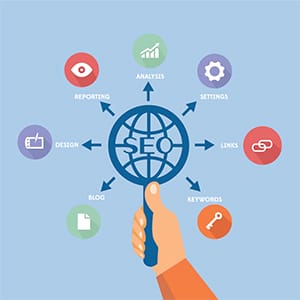
Search engine optimization (SEO) is the practice of improving the visibility and ranking of a website or web page in search engine results pages (SERPs), through the use of various techniques.
SEO can be used to boost traffic to a website from search engines, as well as to improve click-through rates from online advertisements.
The goal is to make a website appear as the first result for relevant keywords on search engine results pages.
You should know the relevant phrases your target audience is looking for, and then the content you create must revolve around them. The Search Engine Journal shows that on the internet, 91.5% of the traffic is driven by sites listed on Google's first page. The first Google search engine's Organic search itself gathers 32.5% of the traffic.
- Brand awareness up very quickly
- It is less costly than PPC
- SEO depends on content and technology
- SEO takes a significant amount of time to work
- Google's evolving algorithms may stand in the way of your efforts
3 - Pay-per-Click (PPC)

Advertising has always been a part of business, but the way businesses advertise has changed dramatically over time. One of the most popular methods of marketing today is pay-per-click (PPC) marketing. PPC is a type of online marketing that allows businesses to place ads on search engines and other websites. When someone clicks on the ad, the business pays the website where the ad was placed a pre-determined amount of money.
Many businesses find PPC marketing to be extremely effective because it allows them to target their audience very specifically. For example, a business can target people who live in a certain area or who have searched for specific keywords online. PPC marketing can also be customized to target people who are already interested in what the business has to offer.
- It is efficient for obtaining a quick top ranking
- It’s very time efficient
- It's timely for targeting popular searches
- Most people are uninterested in advertisements in search engine results and view the natural search results as reliable
4 - Social Media Marketing (SMM)
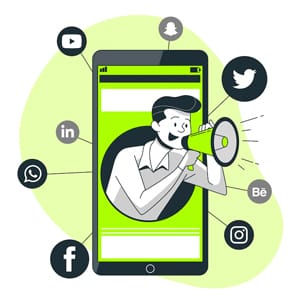
Social media marketing (SMM) is the use of various social networks, such as Facebook, LinkedIn, and Twitter, to market a company or product. It consists of creating a presence on these networks, engaging with users, and using various techniques to drive traffic to a website or blog. SMM can be used to promote a company's brand, products, or services.
SMM can be a cost-effective way to reach and engage customers. It can also help build relationships with customers that can be valuable in the long run. By using social media platforms like Facebook, LinkedIn, Twitter, and Google+, businesses can connect with customers and potential customers alike, build relationships, and create a positive brand image. However, not all businesses are equipped to use social media effectively.
- The conversion rates for content are high.
- Viral content reaches lots of people as it receives more likes, comments, and shares.
- Facebook Instagram advertisements can identify particularly targeted segments and convey your content to the right customers.
- Algorithms have changed a lot over time. You'll have to update your content often in order to survive this.
- You'll need to dedicate effort and time properly doing it.
5 - Affiliate Marketing

Affiliate marketing is a trend that is on the rise and has many people interested in it. It is a way for businesses to get new customers by working with other businesses that will provide the affiliate with a commission for every sale that the affiliate makes. Affiliate marketing can be used by small businesses and large businesses alike.
There are a number of different programs available, so it is important to do your research before joining one.
There are many different types of affiliate marketing, including paid advertising, lead generation, and content marketing. Affiliate marketing involves linking your website or blog to other websites and then earning a commission on the sales that are made. This type of marketing can be very lucrative, and it is an excellent way to earn a supplemental income.
- Sign up and you'll be charged only the conversions their efforts generate
- You do not need a large audience as you are stopped by content providers, who will build a public space for people like you.
- You don’t have full control over your brand, but educating them on your brand identity and messaging is your responsibility.
- You will have to keep them updated on your progress.
6 - Email Marketing

Email marketing is one of the oldest and most effective ways to connect with customers and keep them updated on your company’s latest news and products. By using email newsletters and other email marketing tools, you can communicate with your customers regularly, increasing sales and customer loyalty. It’s also a great way to stay in touch with your customers, build trust, and create loyalty.
Email marketing is simple to set up and use, so you can start promoting your business right away. You can also use email marketing to announce new products or services, conduct customer surveys, and more. Email marketing also allows you to track customer behavior and response rates, which can help you make informed decisions about future marketing initiatives.
- Email marketing does not depend on any algorithms.
- Staying up to date on email lists will help you improve your connection with them over time, and it can greatly impact them when they make a purchase.
- Frequently, customers don't open emails
- it is difficult to add more value so they will not unsubscribe.
7 - Mobile Marketing

With over two billion active mobile users, it's no wonder that marketers are paying attention to mobile marketing. There are a variety of ways to reach these consumers, from paid advertising to content marketing and even in-app messaging. Mobile marketing is a powerful way to connect with customers and prospects on the go. With technology constantly evolving, businesses can now reach more people than ever before with mobile marketing.
Mobile marketing strategies can include targeted ads, push notifications, and other forms of engagement. By using mobile marketing, businesses can create a more personal connection with their customers and keep them updated on new products and services.
There are various ways to measure the success of a mobile marketing campaign and all factors must be taken into account when planning your strategy for mobile marketing.
- Mobile marketing can help with targeting consumers as they spend time the most on mobile, regardless of to use of laptops or desktops.
- It can operate by using geofencing or particular audience segments.
- The click rate for mobile advertisements is quite low
- People often feel annoyed when they are interrupted by advertising messages while communicating
8 - Video Marketing

The video marketing trend is on the rise, and for good reason. Videos are powerful tools that can help you connect with your customers and drive conversions. If your business is looking to increase its reach and grow its customer base through video advertising, content creation is essential. Video content can be anything from a short, entertaining clip to an informative how-to guide.
Video marketing can help your business reach new customers, increase engagement, and grow your bottom line.
There are many ways to create video content, and there are a variety of platforms on which to distribute it. YouTube is one of the powerful video marketing platforms that can help your business reach a wider audience. With over 1.5 billion active users, YouTube is an excellent way to build awareness for your brand and promote your products or services.
- Videos are more effective than text or images
- Videos posted on Facebook, Instagram, and LinkedIn boost reach and engagement, resulting in huge improvements to search results.
- Building video takes much skill, time, and cost.
- Trying to capture the attention of the viewers is difficult. Users then go through the next piece of content in their feed.
9 - Audio Marketing
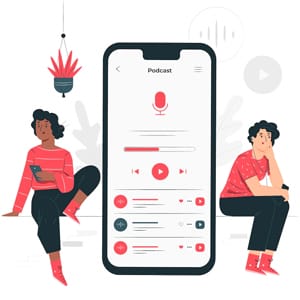
Audio advertising has been around for a while, but it’s only recently taken off in a big way. A lot of people are starting to realize how powerful audio can be when it comes to marketing. Audio can be used to create a really personal connection with your customers, and it can also be a great way to educate people about your products or services.
It's also a great way to create a memorable customer experience. It's important to remember that audio marketing is not only for businesses with audio capabilities but for businesses of all sizes. There are many different ways to use audio marketing, so it's important to find the method that works best for your business.
Produce short, interesting audio content that is relevant to your target market and promotes your products or services. Create audio ads that are interactive and capture the attention of your target market.
- It is less expensive and easier to produce audio content than video content.
- Audio marketing is particularly useful for groups that do not frequently have time to sit down and watch content together.
- Multitasking consumers are less likely to be influenced by voice assistants
- ROI is lower in the short term
10 - Influencer Marketing

Influencer marketing is a growing trend that uses social media and celebrities to promote products. It’s a way for companies to connect with people who have a large audience and can help promote their products.
]There are different types of influencers, including bloggers, vloggers, and social media stars.
These influencers can help companies by sharing their opinion about the product, promoting it on their channels, and building awareness for the product.
Not all platforms are created equal when it comes to influencer marketing. Some platforms, like Instagram, are better for visual products, while others, like Twitter, are better for products with a strong message. Once you've chosen the right platforms, you need to find the right influencers.
- You have the chance to distribute your content to a ready market
- Associated with influencers lets you earn true fans and customers
- You need to choose the right influencer for your targeted audience & brand and identify authentic ways to collaborate with them
- People are becoming more suspicious concerning the reliability of influencers and need to take extra care
Conclusion
You should use a mix of strategies to reach your target market. Try different tactics and see what works best for you. Always keep in mind your goals and the needs of your customers.
Digital marketing is an important part of any business. It's a great way to reach new customers and promote your products or services. By using the right strategies, you can improve your online presence and boost your bottom line.
There are many types of digital marketing. Each has its own unique benefits and drawbacks. It is important to choose the type of digital marketing that will work best for your business.
Continue Reading
- 207 Trade House, Arthugar Street, Nanpura, Surat
- [email protected]
- +91 9712954946
- +91 9825317155


Rhodium Developers
Requirement: New custom-made website with SEO optimization



Problem
It’s a start-up company and it did not have enough stuff to showcase its work. It faced the challenge of establishing a strong online presence to attract potential clients. They wanted a visually appealing website that would convey their professionalism and expertise.
- Consulting
- Process Flow Design
- Wireframes
- UI/UX Design
- Web Design
- Ongoing Maintenance
Our Plan
- We started by thoroughly researching their target audience and competitors, ensuring that the design would stand out from the crowd.
- The first stage of the project was designing a website template. Once the template was ready, we discussed with the client how the flow of the website goes.
- The final pages to be included in the website were selected. Also, the client told us we should mention the process of construction. By including a section on the construction process, Rodium Constructions demonstrates transparency and professionalism, offering potential clients valuable insights into what sets them apart from competitors.
- The second stage of the project was the development of the website. The core set of pages for the website such as the home page and other internal pages were created from scratch.
- Testing and making the website live in a short time. We'll look at various types of tests to ensure that performance and functionality are up to standard, as well as strategies for launching on schedule. We have outlined the strategies to ensure successful completion within their desired timeframe for launching the website.
Execution

1A premium website template was designed in Figma. Blueprints of the home page and other internal pages were created. The color palette has been chosen wisely to exude elegance without compromising usability – sleek beige typography against crisp black backgrounds creates an impactful visual contrast that enhances readability and attention.
2By using strong visuals such as high-quality images and graphics showcasing their past projects, we aimed to convey their expertise and build trust with potential clients. The overall tone we maintained throughout the design process was professional yet approachable, reflecting the client’s brand image as a reliable and innovative construction company.


3 By incorporating intuitive navigation features and user-friendly interfaces, we ensured seamless browsing experiences for potential clients. By focusing on creating internal pages that offered valuable content and intuitive navigation, we were able to provide users with an immersive and informative experience. With intuitive menu options, easy-to-use contact forms, and visually appealing project showcases, visitors are certain to find exactly what they need with minimal effort.


4 One of the primary goals for this project was to showcase the exceptional quality of their work through an impressive gallery section. By leveraging the power of visually appealing images and intuitive navigation, we successfully transformed their website into a virtual gallery that entices visitors to explore more.

5 A major challenge encountered during the project was effectively showcasing Rodium’s unique approach to building construction. By incorporating captivating visuals and interactive elements, such as 2D models and virtual tours, the website successfully demonstrates the intricate processes involved in constructing high-quality buildings. Additionally, clear and concise descriptions were implemented to explain each step of the construction journey, making it easily understandable for potential clients who may not be familiar with technical jargon.
Final Testing
During the testing phase, every aspect of the website will be put under a microscope to ensure its seamless functionality and performance. From checking cross-browser compatibility to ensuring smooth navigation on different devices and screen sizes, no stone will be left unturned. The comprehensive testing process aims not only to identify any potential glitches or bugs but also to guarantee that the user experience is intuitive and flawless.
By utilizing the latest techniques in search engine optimization algorithms, this website is now primed to attract organic traffic and boost its online presence.


